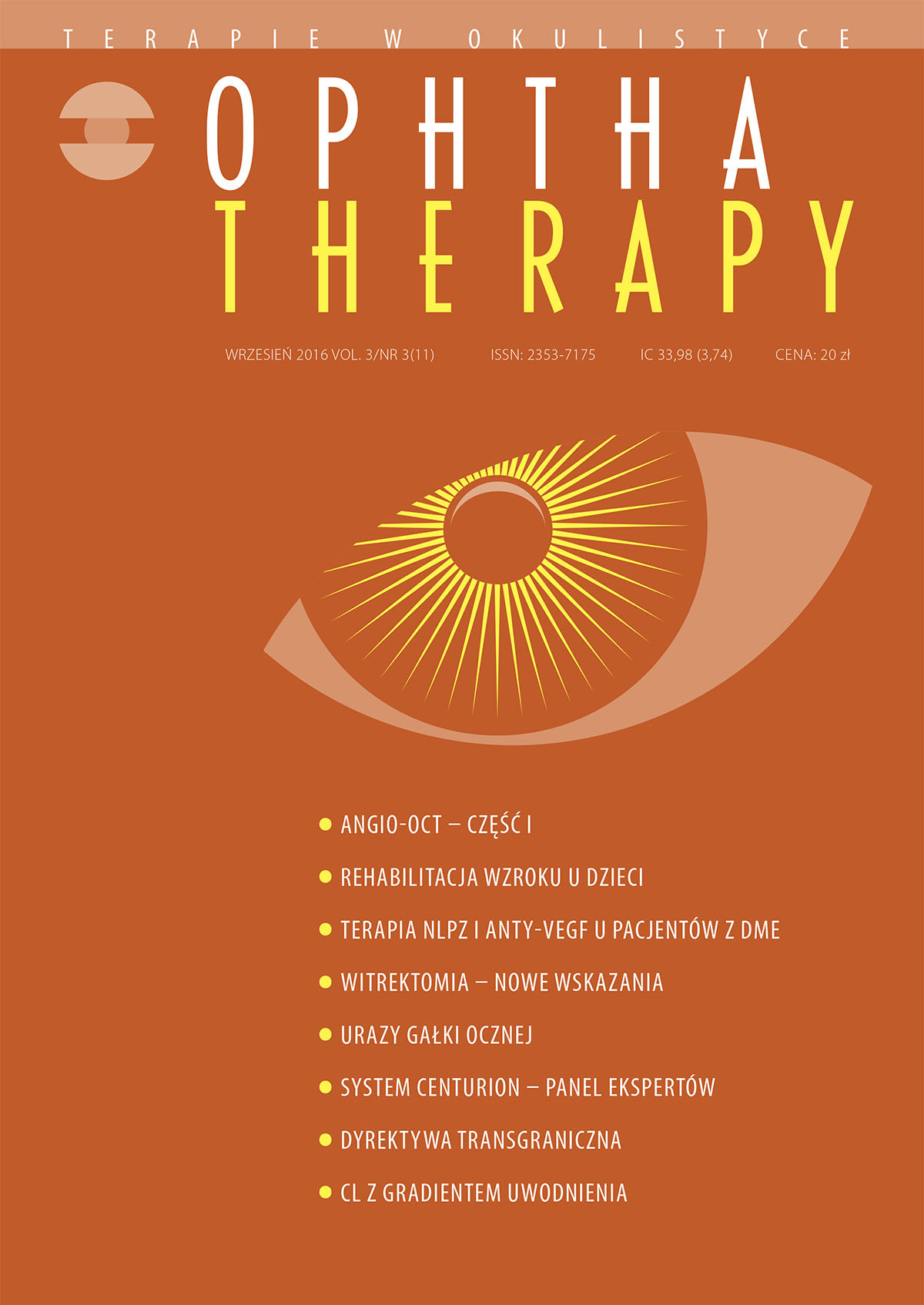Functional vision assessment in children as part of the preparation for low vision rehabilitation therapy
Main Article Content
Abstract
Vision rehabilitation in children, as a form of therapy and vision improvement process, is based on the assumption that the ability to see is not given to us, but instead it is something that can be learnt and acquired. Vision development process consists of some stages. Rehabilitation is designed to help achieve the consecutive stages. To begin rehabilitation activities, it is necessary to assess the level of residual vision, and the assessment is called functional vision assessment. Functional assessment provides information on the external factors that can be influenced and duly adjusted in the course of rehabilitation.
Downloads
Article Details

This work is licensed under a Creative Commons Attribution-NonCommercial-NoDerivatives 4.0 International License.
Copyright: © Medical Education sp. z o.o. License allowing third parties to copy and redistribute the material in any medium or format and to remix, transform, and build upon the material, provided the original work is properly cited and states its license.
Address reprint requests to: Medical Education, Marcin Kuźma (marcin.kuzma@mededu.pl)
References
2. Walkiewicz M. Funkcjonalna ocena wzroku i proces wspomagania rozwoju widzenia u dziecisłabo widzących. Wydawnictwo Akademii Pedagogiki Specjalnej im. M. Grzegorzewskiej, Warszawa 2002: 55-7, 79-83.
3. Walkiewicz-Krutak M. Funkcjonowanie wzrokowe małych dzieci słabo widzących. Wydawnictwo Akademii Pedagogiki Specjalnej, Warszawa 2009: 14-5, 58-9, 65, 74-5, 96-7.
4. Grzyb E, Łośko E, Połomska M et al. Poradnik dla nauczycieli i rodziców dzieci z dysfunkcją wzroku. DRUKPRESS, Kraków 1998: 19-29.
5. Majewski T. Tyflopedagogika rozwojowa. Psychologia dzieci niewidomych i słabo widzących. Wydawnictwo tyflopedagogiczne PZN, Warszawa 2002: 133-322.
6. Corn A. Model funkcjonowania wzrokowego słabo widzących. Materiały Tyflologiczne nr 7. Polski Związek Niewidomych, Warszawa 1991: 12-23.
7. Hyvärinen L. Assessment of visually impaired infants. Ophthalmol Clin North Am. 1994; 7(2): 219-25.
8. Kubatko-Zielińska A, Krzystkowa KM, Pociej-Żero M. Badanie ostrości wzroku u małych dzieci metodą „preferential looking”. Klin Oczna. 1993; 5: 180-2.
9. Dutton G, Bax M. Visual impairment in children due to damage to the brain. Mac Keith Press, London 2010: 130-3.
10. Białoskórska J. Diagnoza i usprawnianie funkcjonowania wzrokowego w pierwszym roku życia dziecka. W: Rewalidacja. Centrum Metodyczne Pomocy Psychologiczno-Pedagogicznej MEN, Warszawa 1997; 1: 22-9.
11. Walczak G. Metody i formy wczesnejrehabilitacji dzieci z uszkodzonym wzrokiem. Fundacja na RzeczDzieci i Młodzieży Niepełnosprawnej, Warszawa 2000: 78.
12. Maureen AD. Ocena i modyfikacje otoczenia dla osób słabo widzących. Zeszyty Tyflopedagogiczne nr 20. Polski Związek Niewidomych, Warszawa 2002: 9-10.
13. Topor I, Rosenblum LP, Hatton DD. Visual Conditions and Functional Vision. Early Intervention Issues. The University of North Carolina, USA 2004: 214-6.
14. Ganesh S, Sethi S, Srivastav S et al. Impact of low vision rehabilitation on functional vision performance of children with visual impairment. Oman J Ophthalmol. 2013; 6(3): 170-3.
15. Barraga NC, Morris JE. Program rozwijania umiejętności posługiwania się wzrokiem. WSPS–PZN, Warszawa 1989 i 1997: 1-11.
16. Rutkowska I, Bednarczuk G, Molik B et al. Balance Functional Assessment in People with Visual Impairment. J Hum Kinet. 2015; 48: 99-109.

